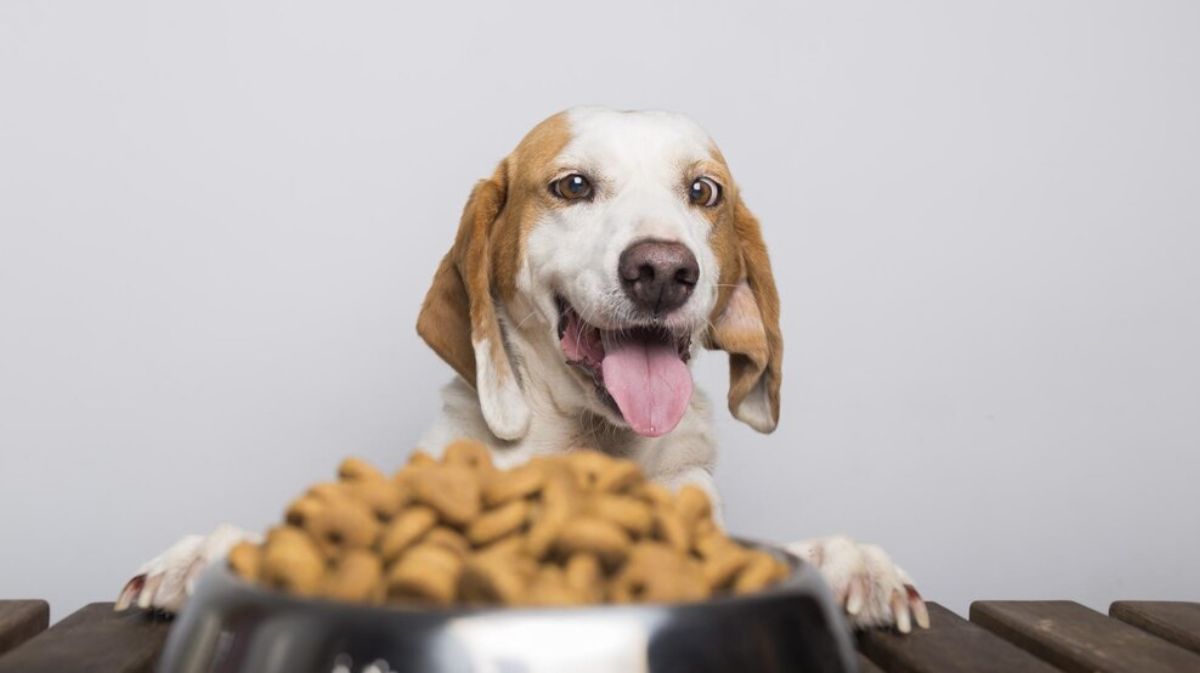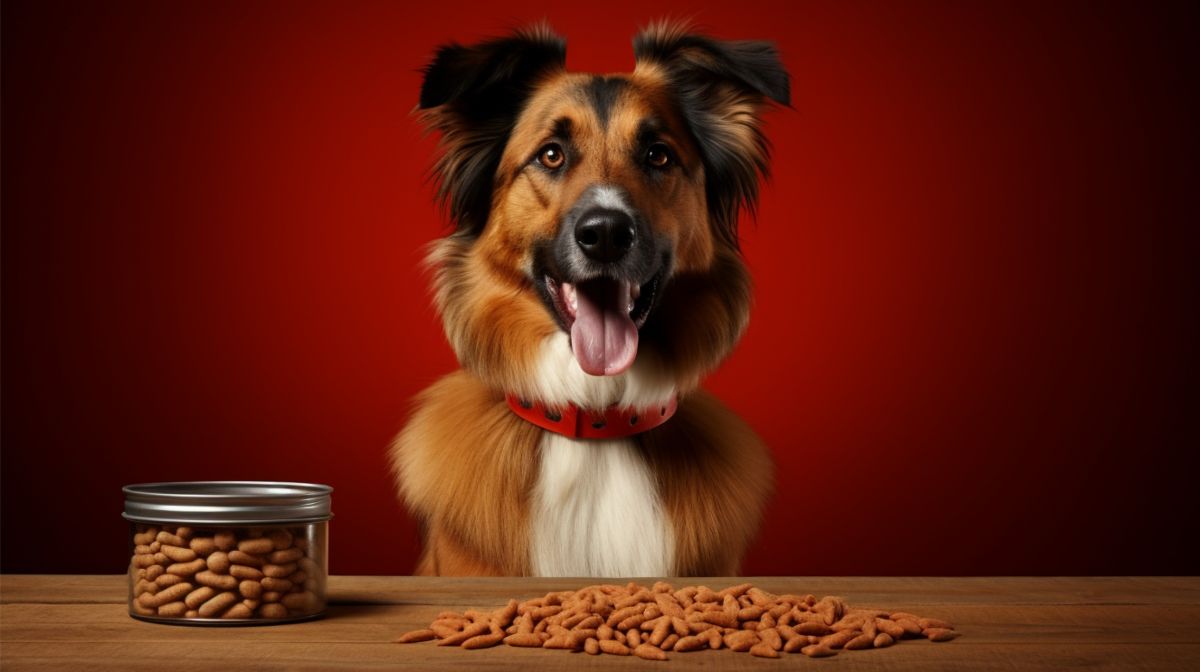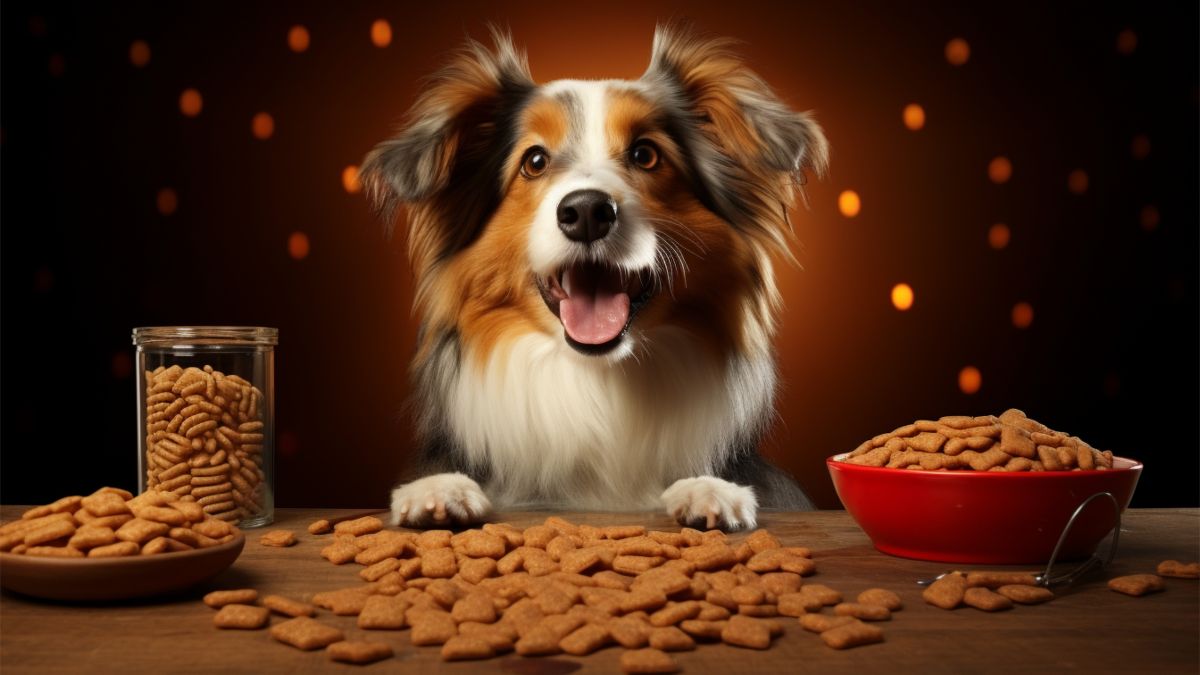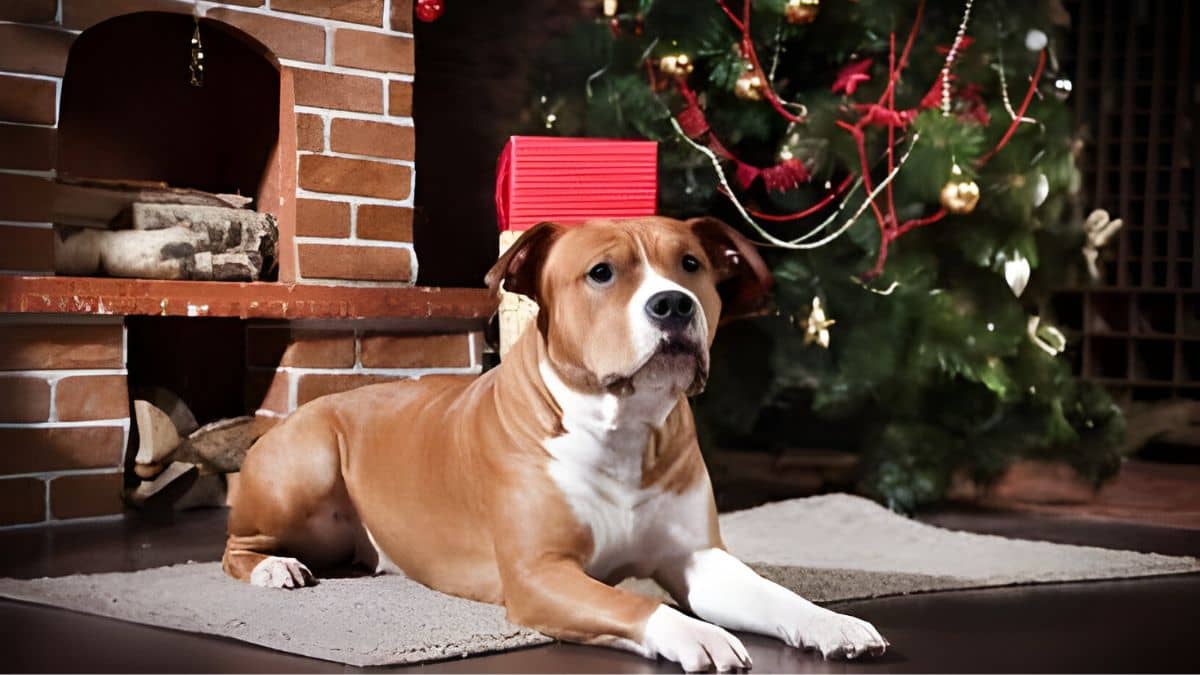With the nourishment concern like parent like us the question on how much wet food to feed a dog?
Has been upholder the arena of pet care. It has turned into a vast form with the needs and the requirements. Feeding your dog the right amount of wet food is important for their health and happiness. Many dog owners wonder how much wet food their pets need each day. The answer depends on many factors.
In this guide I will share my personal steps and initiative that are connected to that very question as well as my personal measure to feed them properly.
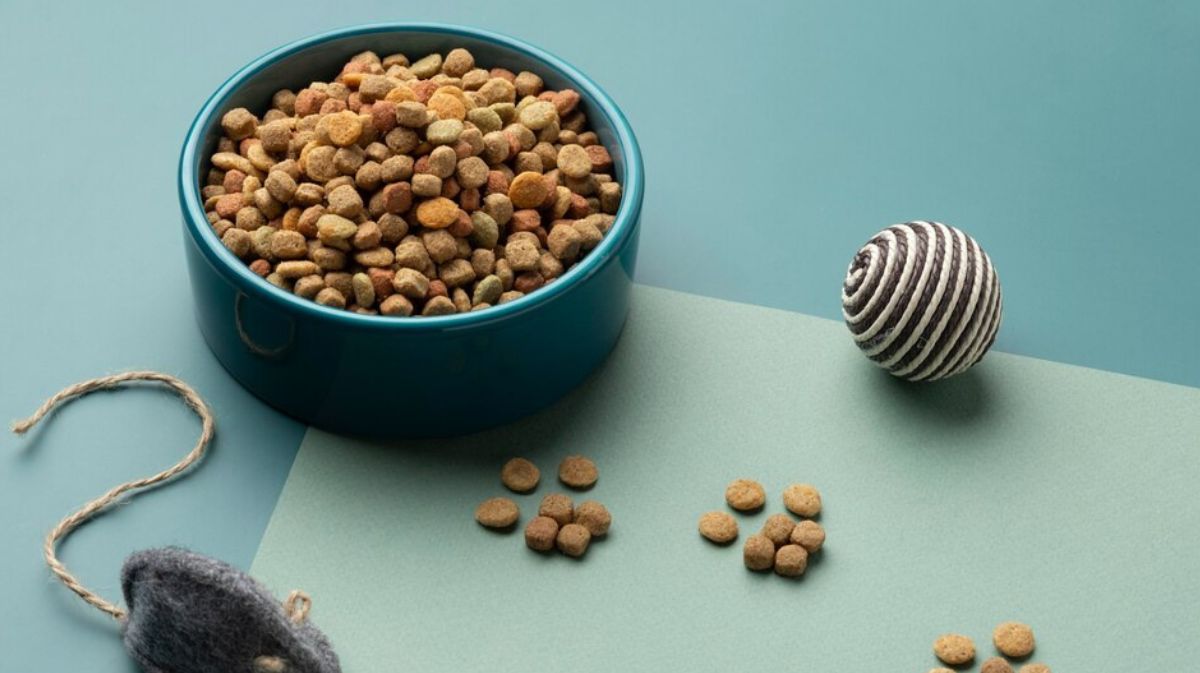
Understanding Wet Food Labels
Understanding wet food labels is essential for selecting healthy options for your pets. The first step is to check the ingredients list. it ensures that real meat like chicken or beef is listed first, and avoids products with meat by-products or fillers like corn.
Next, examine the guaranteed analysis which shows the nutrient levels. Including protein, fat, fiber, and moisture, with high protein content generally being beneficial.
Look for an AAFCO statement indicating that the food meets the nutritional standards set by the Association of American Feed Control Officials and is “complete and balanced.”
Additionally, check the calorie content per serving to make sure your pet receives the right amount of energy because overfeeding can lead to obesity. Always verify the expiration date to ensure the food is fresh.
Finally, follow the feeding instructions to determine appropriate portion sizes based on your pet’s weight and age. By paying attention to these aspects on wet food labels, you can make more informed choices for your pet’s diet.
Understanding a Dog’s Nutritional Needs
Understanding a dog’s nutritional needs is essential for its health and well-being. Dogs need a balanced diet that includes proteins, fats, carbohydrates, vitamins and minerals. Proteins are crucial for muscle development and repair. Good sources of protein include meat, fish and eggs.
Fats provide energy and help keep a dog’s coat shiny and skin healthy. Healthy fats can be found in fish oil and chicken fat. Carbohydrates offer energy and aid digestion.
Vitamins and minerals are also vital for various body functions, such as bone health and immune support. These can be obtained from fruits, vegetables and specially formulated dog foods.
Fresh water is essential too as dogs need to stay hydrated. It is important to choose high-quality dog food that lists meat as the first ingredient. Avoid foods with fillers like corn or soy. Each dog’s needs can vary based on age, size, breed, and activity level.
Puppies, for example, require more protein and calories than adult dogs. Senior dogs might need fewer calories but more fiber. Consulting a vet can help to tailor the diet to your dog’s specific needs. Feeding your dog properly ensures a long, healthy, and happy life.
Factors Influencing the Amount of Wet Food to Feed
Determining the right amount of wet food to feed your pet involves considering several important factors. Here are some key points to help guide you that i personally follow:
Firstly, the pet’s age plays a significant role. Puppies and kittens require more food per pound of body weight than adult dogs and cats because they are growing rapidly and need extra nutrients.
Secondly, activity level is crucial. Highly active pets burn more calories and therefore need more food to maintain their energy levels. Conversely, less active or sedentary pets require less food to prevent weight gain.
Next, pet size is a major consideration. Larger breeds need more food than smaller breeds. For instance, a large dog like a Labrador retriever will need significantly more wet food compared to a small dog like a Chihuahua.
Additionally, health status can influence the amount of food needed. Pets with certain health conditions might need special diets or controlled portions. Always consult a vet for guidance in these situations.
Moreover, food type and caloric content is another factor. Not all wet foods are created equal; some are higher in calories than others. It is important to check the label and adjust the feeding amount accordingly to avoid overfeeding or underfeeding.
Lastly, pet preferences and behavior should be considered. Some pets are picky eaters and might eat less if they don’t like the food. Others might eat everything in sight. it requires controlled portions to prevent overeating.
General Guidelines for Feeding Wet Food to Dogs
Feeding wet food to dogs can be a great choice for their nutrition and hydration. Here are some general guidelines to follow when feeding your dog wet food:
First, choose the right wet food. Ensure the wet food you select is appropriate for your dog’s age, size and health condition. Look for high-quality brands that list meat as the primary ingredient and avoid those with too many fillers or artificial additives.
Second, maintain portion control. Wet food can be calorie-dense, so it’s important to follow the feeding instructions on the can and adjust based on your dog’s activity level and weight. Overfeeding can lead to obesity and related health problems.
Next, store wet food properly. Once opened, wet food should be stored in the refrigerator and used within a few days. This prevents spoilage and keeps the food fresh for your dog.
Moreover, keep a consistent feeding schedule. Dogs thrive on routine, so feeding them at the same times each day can help with digestion and prevent overeating. Regular mealtimes also help in monitoring your dog’s appetite and health.
Additionally, monitor your dog’s health. After switching to wet food, keep an eye on your dog’s weight, coat condition and energy levels. Any drastic changes should be discussed with your veterinarian to ensure the new diet is beneficial.
Lastly, gradually introduce wet food. If your dog is not used to wet food, mix it with their current food and gradually increase the amount over several days. This helps to prevent digestive upset and allows your dog to get accustomed to the new diet.
Monitoring Your Dog’s Weight and Condition
Monitoring your dog’s weight and condition is crucial for their overall health and well-being. Keeping a close eye on your dog’s weight can prevent a variety of health problems and ensure a long, happy life for your furry friend.
Here are important points to consider that i personally follow to care my pet:
Firstly, regular vet visits are essential. During these check-ups, your veterinarian will weigh your dog and check for any health issues. This professional insight helps you to understand if your dog is maintaining a healthy weight.
Next, observe your dog’s body condition. Look for visible ribs and a defined waist. You should be able to feel your dog’s ribs without pressing too hard. A visible waistline and a tucked-up belly indicate a healthy condition.
Moreover, monitor their eating habits. Sudden changes in appetite or eating patterns can be a sign of health issues. Ensure that your dog is eating the right amount of food for their size, age, and activity level.
In addition, keep track of their activity level. Regular exercise is vital for maintaining a healthy weight. Dogs need daily exercise, which can vary from simple walks to more vigorous activities. It also depends on the breed.
Furthermore, adjust their diet as needed. If your dog is gaining too much weight, consult your vet to adjust their diet. This might include changing the type of food or controlling portions more strictly.
Lastly, watch for health issues. Overweight dogs are at risk for conditions like diabetes, heart disease and joint problems. By monitoring their weight, you can help to prevent these issues and catch any problems early.
Determining Your Dog’s Caloric Requirements
Determining your dog’s caloric requirements is important for maintaining their health and well-being. Here are some points to consider i implemented considering for my dog:
First, consider your dog’s age. Puppies require more calories per pound of body weight than adult dogs because they are growing rapidly. Conversely, senior dogs might need fewer calories as their activity level decreases.
Next, account for your dog’s size and breed. Larger breeds generally need more calories than smaller breeds. For example, a Saint Bernard will need significantly more calories than a Chihuahua.
Additionally, evaluate your dog’s activity level. Active dogs, such as those that participate in agility training or long daily walks, it will require more calories than dogs that are more sedentary. An active Border collie, for instance, has different caloric needs compared to a less active Basset Hound.
Furthermore, consider your dog’s health status. Dogs with certain health conditions need special diets that affect their caloric intake. For instance, a dog with diabetes or thyroid issues might have specific dietary requirements.
Moreover, take into account your dog’s neuter or spay status. Neutered or spayed dogs have lower energy requirements. This is because the procedure can reduce their metabolism, meaning they might need fewer calories to maintain a healthy weight.
Lastly, consult your veterinarian. A vet can provide personalized recommendations based on a thorough health evaluation of your dog. They can help determine the exact caloric needs and suggest appropriate feeding guidelines.
Transitioning to Wet Food
Transitioning to wet food for your pet can be a great decision for their health and well-being. Here are some important points to consider when making the switch that i personally implemented in case of transitioning:
Firstly, wet food often contains higher moisture content compared to dry food. This helps in keeping your pet hydrated, it is especially important for cats who tend to drink less water. Increased hydration can support better kidney function and overall health.
Secondly, wet food generally has higher protein content. This is beneficial for pets, particularly those that are more active or have specific dietary needs. High protein diets can help in maintaining lean muscle mass and providing essential nutrients.
Additionally, wet food can be more palatable for many pets. The rich aroma and texture can make it more appealing, especially for picky eaters or older pets who may have lost some of their sense of smell and taste. This can ensure that your pet enjoys their meals and receives proper nutrition.
Moreover, wet food can aid in weight management. Because it is more filling due to its water content, your pet may feel satiated with less food, reducing the risk of overeating and helping to maintain a healthy weight.
Furthermore, transitioning to wet food can improve your pet’s digestion. The high moisture content and softer texture make it easier to digest, which can be beneficial for pets with sensitive stomachs or digestive issues.
Lastly, wet food can help maintain dental health. While dry food is often thought to be better for teeth, the moisture and texture of wet food can also support oral hygiene by reducing the buildup of plaque and tartar.
Monitoring Your Dog’s Health
Keeping an eye on your furry friend’s health is essential for their well-being. Here are some crucial points to consider that i used to implement in terms of my dog:
Firstly, regular check-ups with your veterinarian are vital. These appointments allow professionals to assess your dog’s overall health and catch any potential issues early on. Additionally, they can provide guidance on nutrition, exercise and preventive care to your dog’s specific needs.
Secondly, observe changes in behavior or appetite. Dogs may not always show obvious signs of illness, so being attentive to subtle shifts can help you detect problems early. A sudden decrease in appetite or uncharacteristic lethargy could indicate underlying health issues that require attention.
Thirdly, keep an eye on your dog’s weight. Maintaining a healthy weight is crucial for their overall health and longevity. Regularly weigh your dog and adjust their diet and exercise routine as necessary to prevent obesity or malnourishment.
Furthermore, dental health is often overlooked but is integral to your dog’s well-being. Brush your dog’s teeth regularly and schedule professional cleanings as recommended by your veterinarian. Poor dental hygiene can lead to various health issues including periodontal disease and organ damage.
Moreover, stay up-to-date on vaccinations and preventive medications. These protect your dog from common diseases and parasites, reducing the risk of serious health complications.
Lastly, provide a safe and stimulating environment for your dog. Minimize exposure to toxins. It ensures that they have access to clean water and offer plenty of opportunities for mental and physical exercise. A happy and enriched lifestyle promotes overall health and longevity for your beloved pet.
Consulting with a Veterinarian
When it comes to deciding whether to feed your pet wet food, it’s essential to consider various factors. Consulting with a veterinarian about wet food is a crucial step in making an informed decision for your furry friend’s diet.
Here are some points to consider that i followed in case of my pet care:
Firstly, veterinarians possess specialized knowledge about pet nutrition and dietary requirements. They can provide valuable insights into whether wet food is suitable for your pet based on factors such as age, breed, and health status.
Secondly, veterinarians can offer personalized recommendations to your pet’s specific needs and preferences. They can advise on the ideal wet food formulations, portion sizes and feeding schedules to ensure optimal nutrition and health.
Additionally, veterinarians can assess your pet’s overall health and address any underlying conditions that impact their dietary requirements. They can recommend wet food options that cater to specific dietary restrictions or health concerns such as allergies or digestive issues.
Moreover, veterinarians can monitor your pet’s response to wet food and make adjustments as needed. They can track changes in weight, energy levels, coat condition and digestive health to ensure that the chosen diet is suitable and effective.
Furthermore, veterinarians can provide guidance on transitioning your pet to a wet food diet gradually. They can advise on the proper techniques for introducing new foods to prevent digestive upset and ensure a smooth transition process.
Lastly, veterinarians can offer ongoing support and guidance to help you to navigate any challenges or concerns related to feeding your pet wet food. They can answer questions, address issues, and provide reassurance to ensure that your pet’s dietary needs are met effectively.
Additional Tips for Feeding Wet Food to Dogs
Feeding wet food to dogs can be a great way to provide them with necessary moisture and nutrition. Here are some additional tips to help you make the most of this feeding method:
Firstly, ensure you choose high-quality wet food brands that are nutritionally balanced and approved by veterinarians. Transitioning from dry to wet food should be done gradually over a week or two to prevent stomach upset.
Secondly, consider mixing wet food with dry kibble to create a varied diet and maintain dental health. This combination can also make the meal more satisfying and flavorful for your furry friend.
Moreover, monitor your dog’s weight and adjust the portion sizes accordingly. Wet food tends to be higher in calories so be mindful not to overfeed, especially if your pup is prone to weight gain.
Additionally, store any unused portions of wet food properly to maintain freshness and prevent spoilage. Invest in airtight containers or pouches to keep the food fresh for longer periods.
Furthermore, always provide fresh water alongside wet food to keep your dog hydrated. Hydration is essential for their overall health and digestion, especially when consuming dry food.
Frequently Asked Questions (FAQs)
1. How much wet food to feed a dog by weight?
Feed your dog around 1 ounce of wet food per pound of body weight daily.
2. How often should I feed wet food to my dog?
Feed wet food to your dog twice a day. It divides the total daily amount into two servings.
3. How much wet food should you feed a small dog?
For small dogs, offer about 1/4 to 1/2 cup of wet food per meal. It depends on their weight and activity level.
3. How many grams of wet food should I feed my dog?
Aim for about 28 grams of wet food per pound of your dog’s weight per day, divided into two meals.
4. Is it OK to give a dog wet food every day?
Yes, it is okay to give your dog wet food daily but ensure it is balanced with their nutritional needs and consult your vet for guidance.
Conclusion
Feeding your dog the right amount of wet food is key to their well-being so the question how much wet food to feed a dog can connect most? Always consider your dog’s size, age and activity level in the time of deciding how much to feed.
Remember to check the feeding guidelines on the wet food packaging. It is a good idea to talk to your vet if you are unsure about the right amount. Keep an eye on your dog’s weight and energy levels. Adjust the food amount if you see any changes.
By feeding your dog the correct amount, you can help them to live a long, happy and healthy life. Your dog trusts you to take care of them and proper feeding is a big part of that. With these tips, you can make sure your dog gets the nutrition they need every day.
